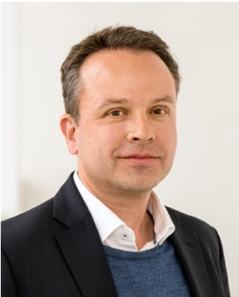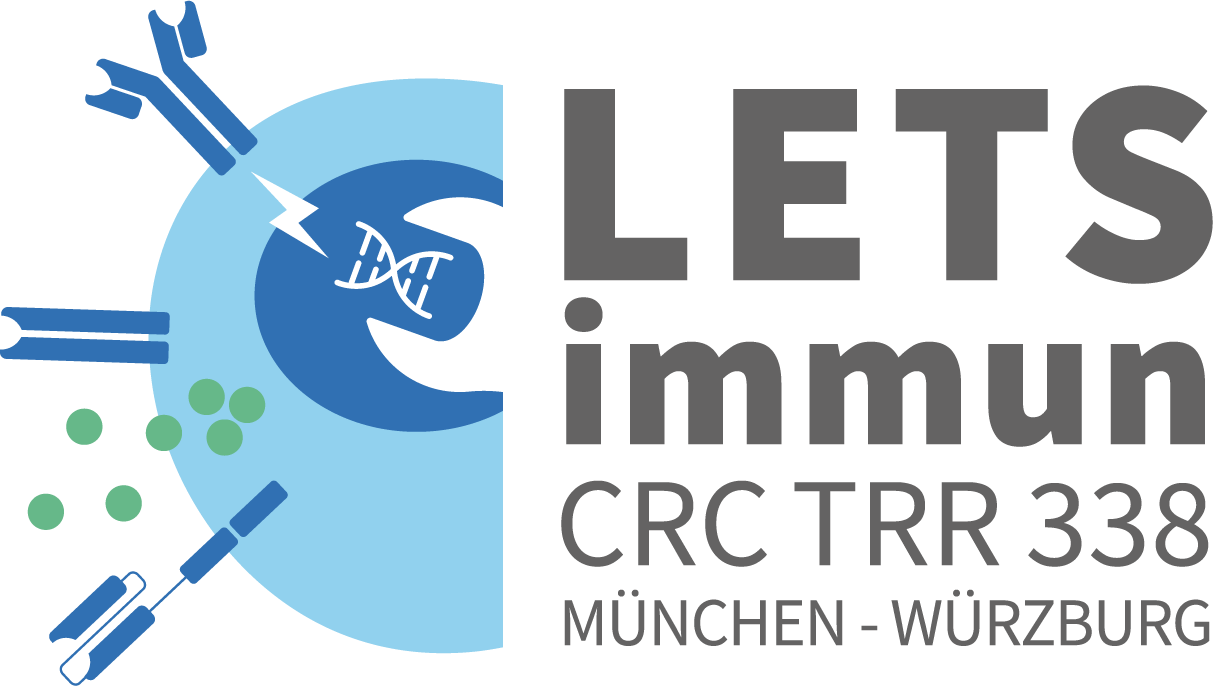
Prof. Dr. rer. nat Vigo Heissmeyer
Institute für Immunologie am Biomedizinischen Centrum der LMU
Ludwig-Maximilians-Universität München
Grosshaderner Str. 9
82152 Planegg-Martinsried
Phone: +49-89-2180-75629
Email: vigo.heissmeyer@med.uni-muenchen.de
University training and degree
1995 Diploma in Biology from the Freie Universität Berlin, Germany
1994 – 1995 Diploma Thesis, Max-Planck Institute of Molecular Genetics, Berlin, Germany, Mentor: Dr. Claus Scheidereit.
1989 – 1994 Studies of Biology at the Freie Universität Berlin, Germany
Advanced academic qualifications
2008 Habilitation procedure initiated at the Department of Biology, Ludwig-Maximilians-Universität München: Molecular mechanisms of differential gene regulation in immune cell-fate decisions
1995 – 2000 Doctoral thesis on NF-kB Signal transduction (Dr. rer. nat.; magna cum laude), Mentor: Dr. Claus Scheidereit
Postgraduate professional career
since 2012 Tenured Professor (W2) at the Institute for Immunology, Ludwig-Maximilians-Universität München
since 2012 Head of Research Unit “Molecular Immune Regulation” Helmholtz Zentrum München, German Research Center for Environmental Health, München
2009 – 2012 Tenured Group leader at the Institute of Molecular Immunology, Helmholtz Zentrum München, German Research Center for Environmental Health, München
2005 – 2009 Tenure-track group leader at the GSF/Helmholtz Zentrum München, German Research Center for Environmental Health, München
2001 – 2005 Postdoctoral Fellow at Center for Blood Research, Harvard Medical School Boston, USA
2000 Postdoctoral Fellow at the Max-Delbrück Center for Molecular Medicine, Berlin
2014 – 2018 Invited Member of the Editorial Board of Molecular and Cellular Biology
2011 – 2016 ERC Starting Grant (Consolidator Category)
2004 – 2005 Cancer Research Institute Fellowship
2001 – 2004 EMBO Longterm Fellowship
a) Articles published by outlets with scientific quality assurance, book publications and works accepted for publication, but not yet published
1. Essig K*, Kronbeck N*, Guimaraes JC*, Lohs C*, Schlundt A, Hoffmann A, Behrens G, Brenner S, Kowalska J, Lopez-Rodriguez C, Jemielity J, Holtmann H, Reiche K, Hackermuller J, Sattler M, Zavolan M#, Heissmeyer V#. 2018. Roquin targets mRNAs in a 3′-UTR-specific manner by different modes of regulation. Nat Commun 9: 3810
2. Rehage N*, Davydova E*, Conrad C*, Behrens G, Maiser A, Stehklein JE, Brenner S, Klein J, Jeridi A, Hoffmann A, Lee E, Dianzani U, Willemsen R, Feederle R, Reiche K, Hackermuller J, Leonhardt H, Sharma S#, Niessing D#, Heissmeyer V#. 2018. Binding of NUFIP2 to Roquin promotes recognition and regulation of ICOS mRNA. Nat Commun 9: 299
3. Essig K*, Hu D*, Guimaraes JC, Alterauge D, Edelmann S, Raj T, Kranich J, Behrens G, Heiseke A, Floess S, Klein J, Maiser A, Marschall S, Hrabe de Angelis M, Leonhardt H, Calkhoven CF, Noessner E, Brocker T, Huehn J, Krug AB, Zavolan M, Baumjohann D, Heissmeyer V. 2017. Roquin Suppresses the PI3K-mTOR Signaling Pathway to Inhibit T Helper Cell Differentiation and Conversion of Treg to Tfr Cells. Immunity 47: 1067-82 e12
4. Janowski R*, Heinz GA*, Schlundt A*, Wommelsdorf N, Brenner S, Gruber AR, Blank M, Buch T, Buhmann R, Zavolan M, Niessing D#, Heissmeyer V#, Sattler M#. 2016. Roquin recognizes a non-canonical hexaloop structure in the 3′-UTR of Ox40. Nat Commun 7: 11032
5. Warth SC, Hoefig KP, Hiekel A, Schallenberg S, Jovanovic K, Klein L, Kretschmer K, Ansel KM, Heissmeyer V. 2015. Induced miR-99a expression represses Mtor cooperatively with miR-150 to promote regulatory T-cell differentiation. EMBO J 34: 1195-213
6. Jeltsch KM*, Hu D*, Brenner S*, Zoller J, Heinz GA, Nagel D, Vogel KU, Rehage N, Warth SC, Edelmann SL, Gloury R, Martin N, Lohs C, Lech M, Stehklein JE, Geerlof A, Kremmer E, Weber A, Anders HJ, Schmitz I, Schmidt-Supprian M, Fu M, Holtmann H, Krappmann D, Ruland J, Kallies A, Heikenwalder M, Heissmeyer V. 2014. Cleavage of roquin and regnase-1 by the paracaspase MALT1 releases their cooperatively repressed targets to promote T(H)17 differentiation. Nat Immunol 15: 1079-89
7. Hoefig KP, Rath N, Heinz GA, Wolf C, Dameris J, Schepers A, Kremmer E, Ansel KM, Heissmeyer V. 2013. Eri1 degrades the stem-loop of oligouridylated histone mRNAs to induce replication-dependent decay. Nat Struct Mol Biol 20: 73-81
8. Vogel KU*, Edelmann SL*, Jeltsch KM, Bertossi A, Heger K, Heinz GA, Zoller J, Warth SC, Hoefig KP, Lohs C, Neff F, Kremmer E, Schick J, Repsilber D, Geerlof A, Blum H, Wurst W, Heikenwalder M, Schmidt-Supprian M#, Heissmeyer V#. 2013. Roquin paralogs 1 and 2 redundantly repress the Icos and Ox40 costimulator mRNAs and control follicular helper T cell differentiation. Immunity 38: 655-68
9. Glasmacher E, Hoefig KP, Vogel KU, Rath N, Du L, Wolf C, Kremmer E, Wang X, Heissmeyer V. 2010. Roquin binds inducible costimulator mRNA and effectors of mRNA decay to induce microRNA-independent post-transcriptional repression. Nat Immunol 11: 725-33
10. Ansel KM, Pastor WA, Rath N, Lapan AD, Glasmacher E, Wolf C, Smith LC, Papadopoulou N, Lamperti ED, Tahiliani M, Ellwart JW, Shi Y, Kremmer E, Rao A, Heissmeyer V. 2008. Mouse Eri1 interacts with the ribosome and catalyzes 5.8S rRNA processing. Nat Struct Mol Biol 15: 523-30
